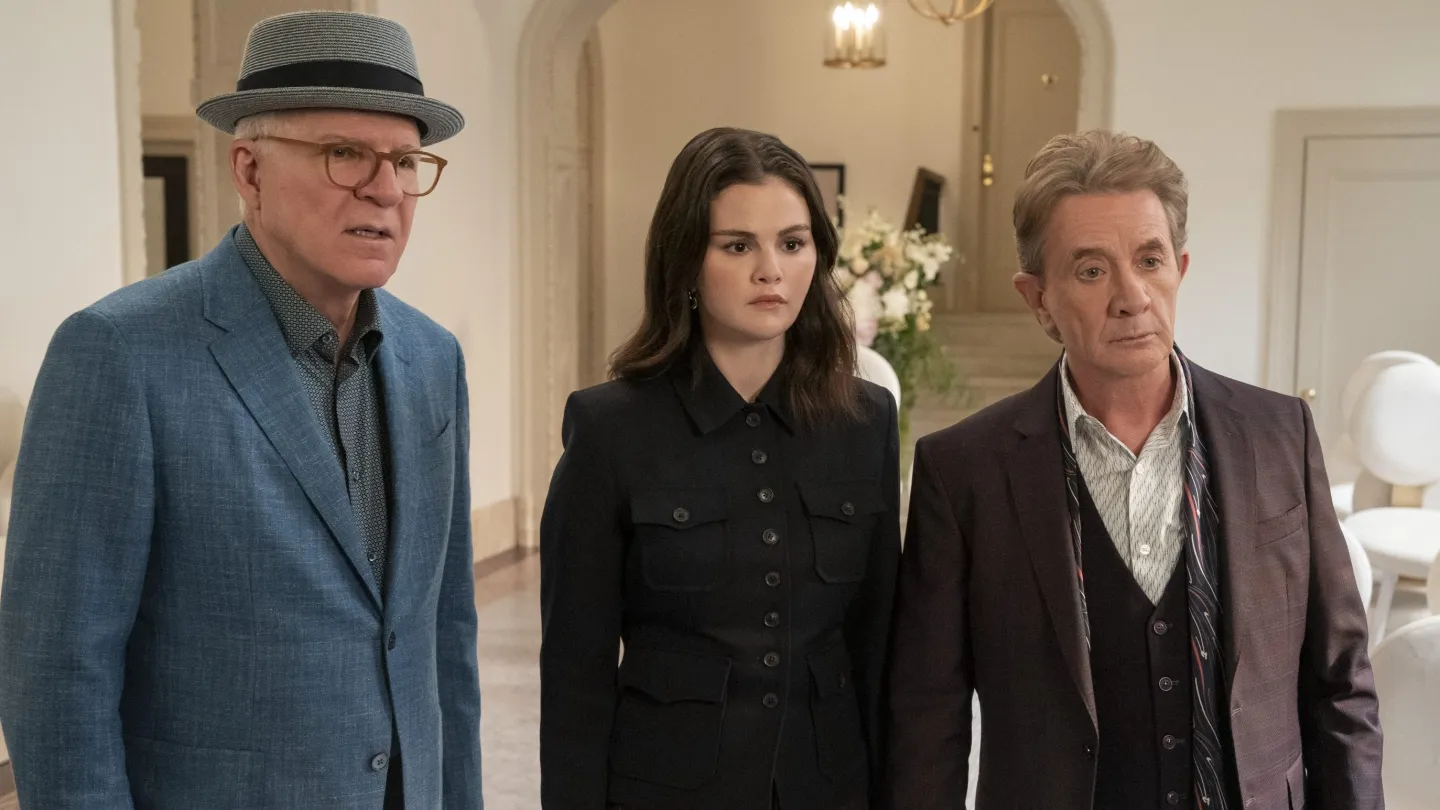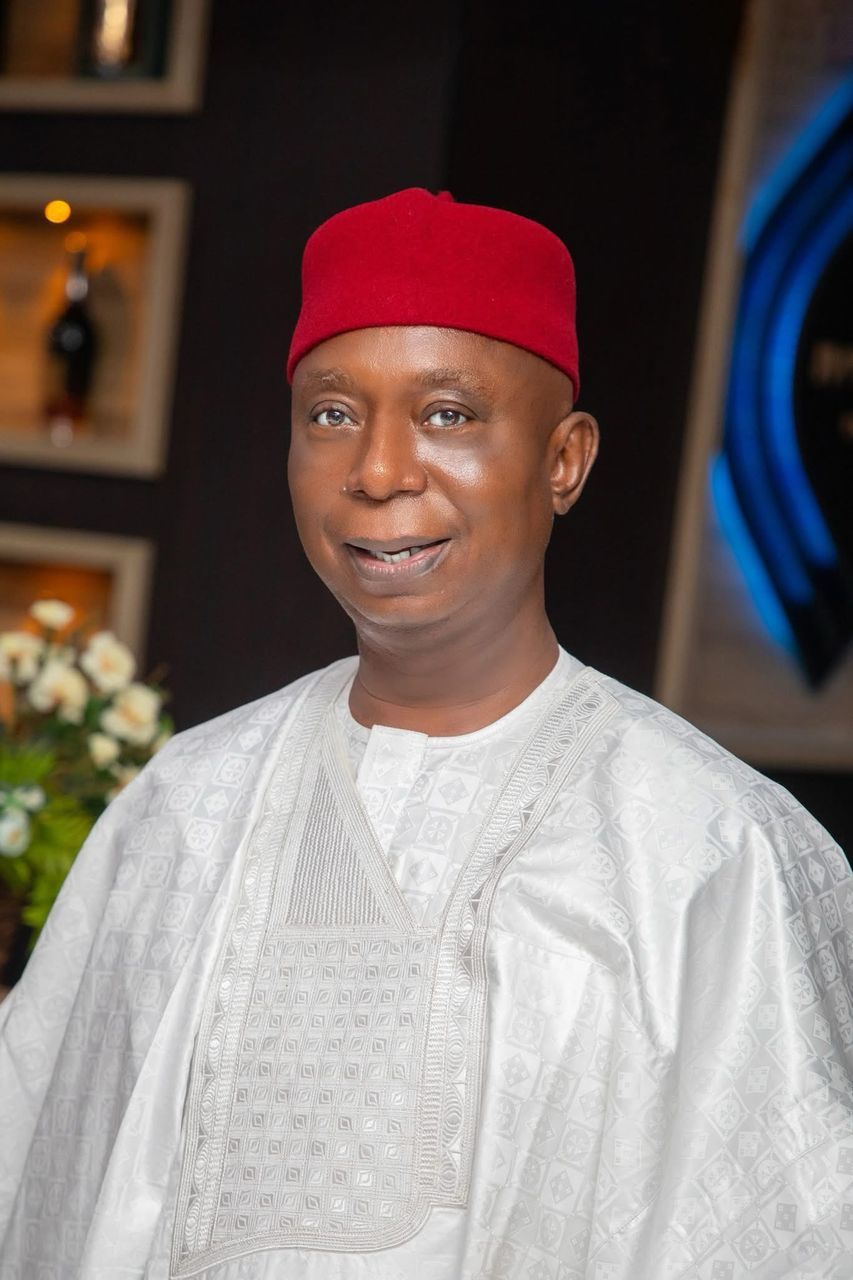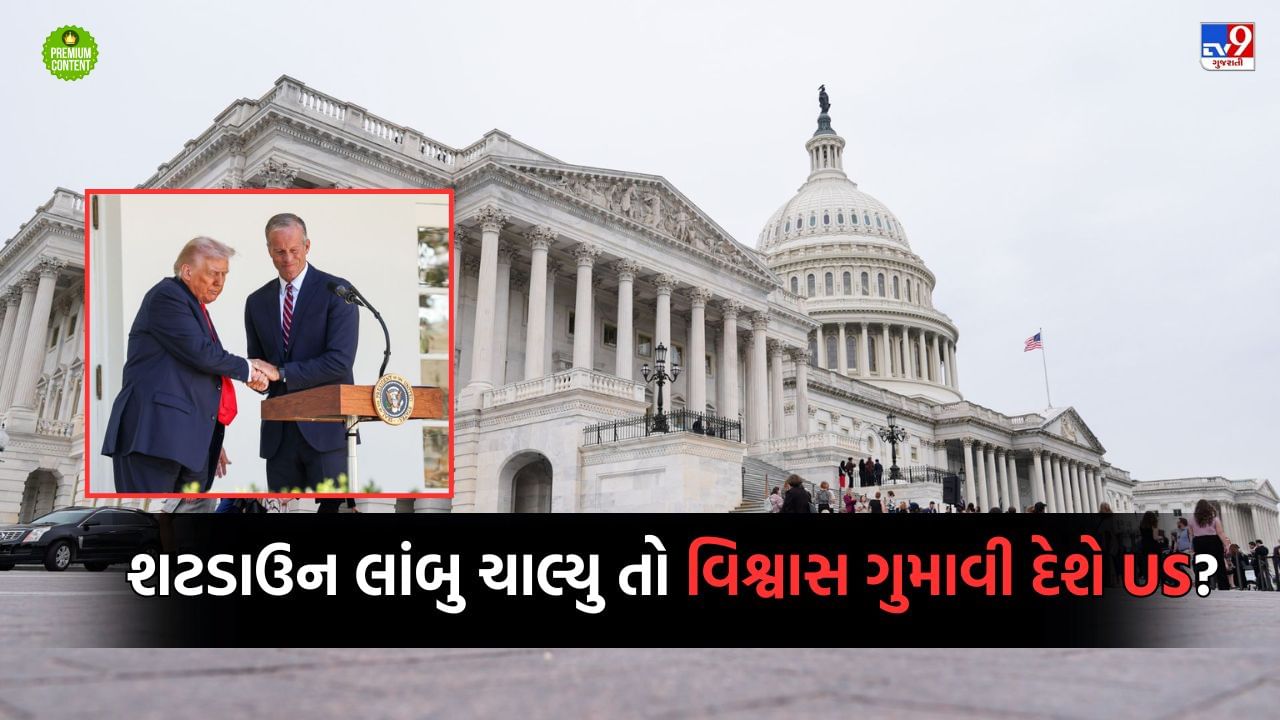Copyright The Hollywood Reporter

[This story contains MAJOR spoilers from the Only Murders in the Building season five finale.] For its next act, Only Murders in the Building is returning to its roots. And that move back toward an “origin point,” as creator John Hoffman describes it, is apparent after how season five just ended — with the death of the trio’s original inspiration (and sometime nemesis), Cinda Canning, played by Tina Fey. The twist ending is the cherry on top of a twisted finale. In the final hour of season five, the starring trio of Charles-Haden Savage (Steve Martin), Oliver Putnam (Martin Short) and Mabel Mora (Selena Gomez) finally point the finger (literally) at the person who killed beloved doorman Lester (Teddy Coluca). Turns out, it’s none other than New York City mayor Beau Tillman (Keegan-Michael Key), who was secretly working alongside the season’s crooked billionaires to fund his campaign with false promises to bestow the rights to the city’s first casino. Hoffman and the rest of the creatives behind Only Murders certainly didn’t plan for their season to wrap up in a way that feels oddly in line with current New York politics, as the city’s mayoral race intensifies under a global spotlight. But the way the storyline wraps ups — with one of the three billionaires, Logan Lerman’s Jay, deciding to step up and own his role in the season’s shady dealings, therefore taking himself down alongside his other culprits — was certainly some wishful thinking that could, one day, prove prophetic. Below, Hoffman speaks with The Hollywood Reporter to talk about all of that and more, including some details on what to expect from the Cinda-centered season six — which was made official shortly before this story published, but after our chat with Hoffman (Hulu would not confirm or deny recent reports of the show’s move to London, but perhaps you can read between the lines). He also discusses how the mayor’s murder plot came together, the show’s suggestion of a billion-dollar answer to our long national nightmare and a bit on the major season five cameo you might have missed. *** Let’s start at the very end. How did you know you wanted to wrap the season with Cinda’s death, and use that as the jumping point for season six? This whole season has been asking some central questions about the location of the building and what got them involved in all of this. It’s a season where we’re looking at: What does the home mean to us? How much do we defend the home? How far have we come together as a trio after five seasons? Unbelievable to say that, but after five seasons, we land with this trio solving all these murders and hitting a new level of care about what got started five years ago in relation to the family that was built in their building and among the trio. So we’re going back to the origin point, again, for the trio. What brought them together in the first place? It was a Cinda Canning affection and a particular affection around one true crime podcast she was doing at the moment they all met that both inspired them and got them rolling into this direction. There was a lot about looking at where we are going to be setting our next season, and thinking about the origins of storytelling around crime and mysteries and murder mysteries, cozy murder mysteries. All of a sudden, it all came together as wanting to look at origins for both the storytelling nature of what is at the source [of the detective genre] through the Agatha Christies and Arthur Conan Doyles and on and on, and on to podcasting today and that line between them, and what that might hold as fertile ground for next season beyond the incredible character that Tina Fey created for us that got this ball rolling. Every season interrogates a different aspect of entertainment. Season one tackled murder podcasts head on, season two interrogated the audience a bit, season three was the big Broadway number, season four took on Hollywood and now season five went deep into power dynamics. The way you’re describing season six as an examination of classic literature and its impact on Only Murders, with the Sherlock of it all, I can’t help but wonder if this isn’t a great opportunity to explore “the Moriarty theory,” where it’s suggested someone’s been pulling the strings behind these murders all series long? What you’re saying is possibly correct. (Laughs.) The dives we’ve taken into particular areas each season — the idea of when you step back and look at podcasting in regards to true crime stories or mystery stories and that a podcaster takes a real story and rearranges it to tell their own version of the story — there’s a fictional compiling that happens. I really like the idea that the whole show is classic meets modern. I love the idea of looking at classic building blocks of murder mysteries. Where else would you go other than Sherlock Holmes, Agatha Christie? Then it’s about marrying that to what it is today, how those things either gel or are in deep conflict, and putting our trio of newbie podcasters who are not newbies anymore, who have really made fodder of putting these stories together while also investigating and doing it in their own unique way, and getting back to the roots of, why are these stories compelling? How are they told in the best way? Is this an area that should be left for fiction as opposed to the more delicate balance of dealing with real people’s lives [in true crime podcasting]? All of that felt like an exciting branch to step out on for a new season that also does what you’re saying, which is that it takes us to an exciting new territory. As you say, they aren’t newbie podcasters anymore. In fact, with their chief rival Cinda now gone, they’re suddenly ruling the space. No question. With Cinda, we have someone in the lexicon of the show who is the beginning of the legacy for our trio. How does that extend further for the legacy of this endeavor of storytelling within this realm of murder mystery? All of that felt steeped in great history for the show and this kind of storytelling. I’m insanely stoked about an extra charge behind the ideas and the writing while also keeping very, very central who this trio is and where they come from, but being able to supercharge the season next year with some really new elements that feel well-timed. Speaking of well-timed, the killer is revealed: Mayor Beau Tillman. You and the writers looked ahead at the calendar and realized your finale would land one week before the New York mayoral election, I’m sure? It’s not tense enough as is. You’re right about that. (Laughs.) It hit me more recently. We certainly thought about New York politics. We thought about New York today and, more than anything in season five, we aimed ourselves at the headlines, right at a casino bid that’s being presented right now in New York, and looking at all of the nature of power in New York as a central tenet of what we were aiming to explore in a our kind of ridiculous way. That all felt like a fresh take. What does all of New York power look like right now and how do we put all the power players in the mix of this building with its unusual history? It felt exciting to do that and keep it specifically New York flavor. Lo and behold, the headlines kept supporting it up until literally today. And who knows about tomorrow. I know! I live in a neighborhood in Brooklyn that was predominantly Italian-American that is now deeply gentrified, which feels very connected to the way the power dynamics unfold this season: the mafia casino buried in a historic building, now on the cusp of turning into a high-profile casino, all in conjunction with big money politics. The way you mapped out these different power layers ended up feeling very true to the New York I see outside my window. It all really starts and continues forward from the narrative. Once we knew last season that Lester, our beloved doorman — this heralded job in New York that’s very specific to these big metropolises and particular to New York — and our victim, why and how and what his life represents in New York, then it all unfolded from there. I had a college theater professor in New York who is the model for Oliver Putnam named Dr. Richard Mason. He was a larger-than-life character who lived in the Village and he was known as the mayor of Charles Street. You’d walk with him around his neighborhood and he would yell out to the patrons eating on the street: “Don’t eat their ketchup! Botulism! They leave it out in the summer all day long!” He was making sure everyone knows what’s right and wrong. I love that clash of old New York with new New York. The voice of a New Yorker is important. You recognize the people who are living in their neighborhoods and fighting for the best of what they are, and holding onto the stuff that’s really important. You recognize people looking out for their neighbor in their right to be there against all sorts of things that could come and change things. I think there’s no more pertinent theme going on in our country and our world. I see it everywhere. It is central to how we are living and what is worthy of defending. It’s happening in one building on a corner in New York, or in a neighborhood like yours, where everyone is looking to claim that space, defend it and say, it’s worth it. It’s worth it to me to stand up for the lady up on the third floor and the kid who’s going to be living here after I go. That is very powerful. The mayor and billionaires all suffer consequences because one of the billionaires, Jay, decides to do the right thing. It’s a pretty hopeful idea: could just one of you ridiculously wealthy and powerful individuals find some sense of moral clarity to do the right thing, even at your own expense? Bingo. That’s a very true idea to me, and it felt very true in the writers room. There’s a scene in the finale, one of my favorites, between Logan and Christoph Waltz, where the turn happens finally for good for Jay. It’s a moment where he’s taken aback by Bash Steed (Waltz) in that they’ve both lost the game they’ve been playing all season, and yet Bash is telling him over a drink, “We should hook up, move on beyond this. Let’s look for something bigger. What else can we own? The Statue of Liberty?” The “New York Knicker Boxers,” as he calls them? Jay takes that moment in and is like, Jesus, you’ve really freaked me out. It’s a bit of a mirror that Mabel has been holding up to him all season where finally he makes a decision to do the thing we all would love someone to do: Step up and say, “Yeah, I’m going to buck everything that got me here.” Every season, you add to the very deep bench of characters who exist in this universe. Some we never see again, but many come back. Who from season five do you want to see again? Every last one of them. We’ve been so fortunate over the years. You read things online where people are talking about, “Oh, it’s just so celebrity-laden, these guest stars.” Truthfully, I just do this job. We write the characters. We’re not thinking in terms of celebrities. We’re looking at the characters and saying, “Who’s the model? Who’s the dream person to cast here?” Then sometimes we say, “This would be the dream person, but that’ll never happen.” And then someone says, “Let me call.” And it happens more often than not, more than I would dream of. So I’m like, “Well, I’m not going to say no to that person! They’re going to come and do this and grace us with these performances.” With everybody across the board this season, there are some particulars that make me very happy. There’s Téa Leoni, who was fantastic as Sofia Caccimelio, and this finale for her is awesome. All throughout the season, you’re on the edge wondering where that character’s going, and she nails it completely. Renée [Zellweger] came up with someone who was a wholly original Renée Zellweger creation, but in tandem with the dance we were doing with the writing of that character and finding her own particulars; she was incredibly funny and moving. There are also people like Dianne Wiest, whose work I’ve loved forever. Her character finally ends in an apartment at the Arconia. I love that she’s behind one of those windows now looking out on the courtyard with us. In terms of that for the future, and in terms of anyone, frankly, whether we kill them or whether we make them killers, there’s no chance there isn’t a shot they’ll come back. Even if you’ve killed them multiple times, as with Paul Rudd… Yes, now confirmed to have been the voice of LESTR this season. He’s in every season except the first one now. Do you have to pull a George Lucas and reinsert him in season one somehow? A Ben Glenroy poster on a wall should be easy enough. That would be sweet, wouldn’t it? A proper George Lucas move. (Laughs.) I won’t take anything off the table because that’s the affection I have for Paul Rudd. He’s the greatest. As you know, he loves a good running joke like nobody else. If we find a way to bring him back, we will. We didn’t think we had one this season. We were trying and thinking, and Paul would text, “Anything you got?” I’m like, “I’m thinking on a couple of things, but maybe, I don’t know, don’t count on it, but maybe. I’m trying.” We would laugh about it, and then I called him at the 11th hour and said, “There is something, and it really makes me laugh because not only do you come back, but we kill you and then you come back again.” So that’s even more of a running gag that we keep doing that. I mean, how many times can I kill Paul Rudd on this show? We’re already up to three, sort of four times, right? One of my favorite line reads of the season is LESTR going out the window and Paul just saying, “Oh, no!” How much more juice do you see here in Only Murders, John? How much more paint do you have to put on this particular canvas? [Reminder note: OMITB was renewed for season six shortly before this story published.] I guess I ask myself that every now and then, but the truth is that the ideas come first and more than anything, if there’s an idea that makes me feel, “Oh gosh, I would love to write about that, we would love to lead a season towards that with this incredible trio,” then we do it. Obviously, Steve Martin and Dan Fogelman and Jess Rosenthal and I started this whole thing, and then Selena Gomez and Marty Short and everyone made magic together. When you get something like this, it’s such rare air and a once-in-a-lifetime kind of thing. So until either they all decide, “I think we’re good,” the cast or anything leave or Hulu [ends it], God knows. But until that time, I can’t fathom a better thing to write about, a better group to write for, a better job in the whole history of the world. Truthfully, the people I have gotten to meet and work with and live most of my days worrying that I’m not giving them something good enough that will make them happy, this is all the driving force of my dreams. I will continue as long as they’ll have me. *** Only Murders in the Building season five is now streaming all episodes on Hulu.



